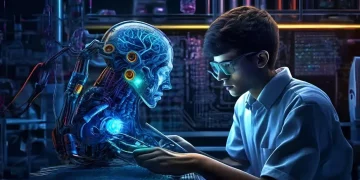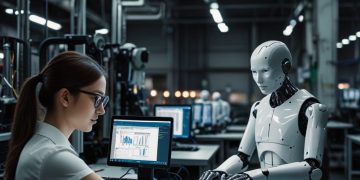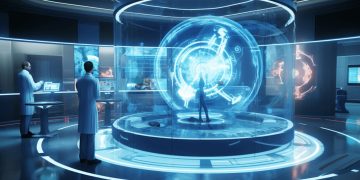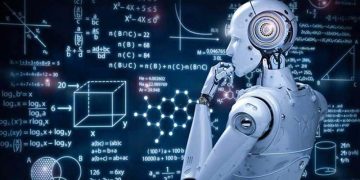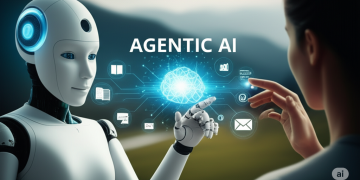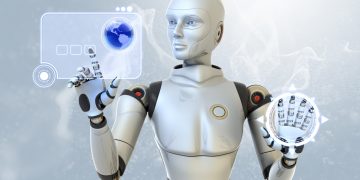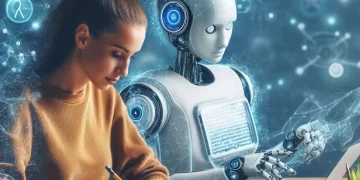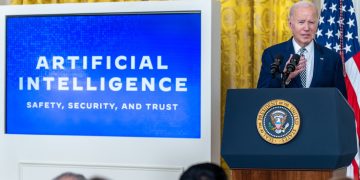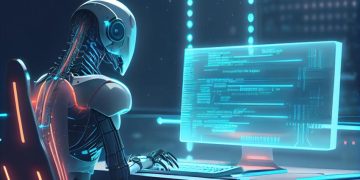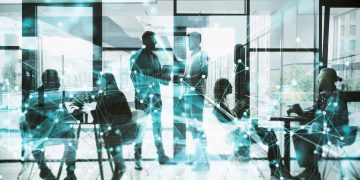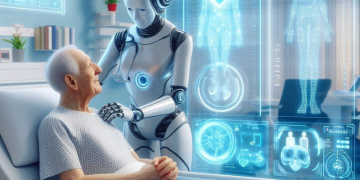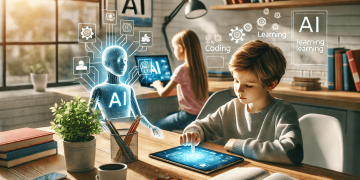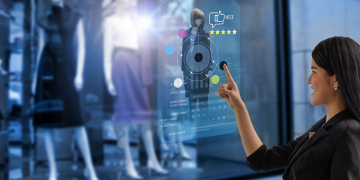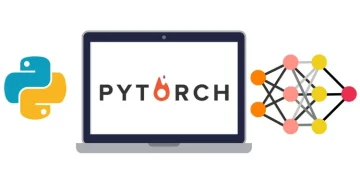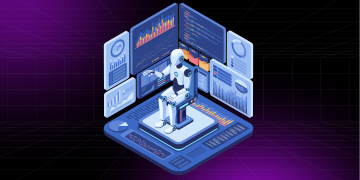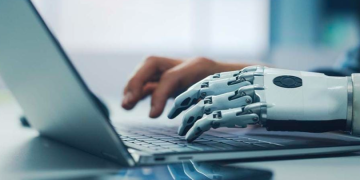Introduction
In the age of rapid technological advancements, artificial intelligence (AI) has increasingly permeated every aspect of modern society, from healthcare and education to business and entertainment. Traditionally, AI has been viewed primarily as an automation tool designed to replace human labor in tasks ranging from routine data entry to complex decision-making processes. However, as AI continues to evolve, a paradigm shift is emerging: AI is not merely an automation tool; it should be seen as a collaborative partner that enhances and augments human capabilities.
The concept of human-AI collaboration emphasizes that AI systems, rather than replacing human workers, can complement their skills and empower them to achieve greater efficiency, creativity, and problem-solving abilities. This article explores the evolving relationship between AI and human workers, discussing the benefits, challenges, and potential of collaboration between humans and intelligent systems. We will examine how AI can augment human decision-making, improve productivity, and create new opportunities for work and innovation.
1. The Changing Role of AI in the Workforce
From Automation to Collaboration
Historically, the primary appeal of AI has been its potential to automate repetitive, time-consuming, and mundane tasks. Automation allows organizations to improve efficiency, reduce costs, and enhance productivity. From chatbots handling customer service inquiries to robotic process automation (RPA) systems managing data entry, AI has been seen as a valuable tool for increasing output while reducing the reliance on human labor for routine functions.
However, as AI technology matures, it is clear that the future of work will not be characterized by the replacement of humans but by collaboration. Rather than simply automating tasks, AI has the potential to augment human skills, enabling workers to perform more complex, creative, and value-driven tasks. This shift is driven by AI’s ability to handle vast amounts of data, identify patterns, and generate insights that can inform human decision-making.
For example, in fields like medicine, AI is used to assist doctors in diagnosing diseases, interpreting medical images, and predicting patient outcomes. While AI systems can process and analyze data at speeds that far exceed human capabilities, they are designed to collaborate with medical professionals who use their expertise to interpret results, make final decisions, and provide patient care. In this scenario, AI is not replacing doctors; rather, it is enhancing their ability to deliver better care more efficiently.
The Rise of Human-AI Partnerships
Human-AI collaboration does not imply that AI systems will simply work under the control of humans. Instead, it suggests that AI and humans will work together as equals, each bringing unique strengths to the table. Humans excel at tasks requiring creativity, emotional intelligence, and ethical decision-making, while AI excels at tasks involving large-scale data processing, pattern recognition, and automation. By combining these strengths, human-AI partnerships can drive innovation, improve outcomes, and create new opportunities for growth.
For instance, in creative industries, AI tools can assist designers by generating design prototypes, suggesting color palettes, or analyzing customer preferences. Designers can then take these AI-generated suggestions and apply their creativity and expertise to create truly unique products. In the same way, in engineering and architecture, AI-powered simulations and design tools can offer insights that speed up development processes and help identify optimal solutions. These applications demonstrate how AI can enhance human creativity rather than stifle it.
2. Benefits of Human-AI Collaboration
Enhanced Decision-Making and Problem Solving
One of the most significant benefits of human-AI collaboration is the enhancement of decision-making. AI’s ability to process vast amounts of data and provide actionable insights allows human workers to make more informed, data-driven decisions. AI systems can analyze historical data, identify trends, and generate forecasts that would be time-consuming or impossible for humans to accomplish alone.
For example, in finance, AI algorithms can analyze market conditions, predict stock movements, and provide real-time insights into portfolio performance. Human financial advisors can then use these insights to guide investment strategies and provide personalized advice to clients. Similarly, in manufacturing, AI-powered predictive maintenance systems can analyze sensor data from equipment to predict potential failures before they occur, allowing human workers to address issues proactively and avoid costly downtime.
Increased Productivity
AI-driven automation can greatly increase productivity by handling repetitive and time-consuming tasks. In fields such as customer support, AI-powered chatbots can assist with routine inquiries, enabling human customer service agents to focus on more complex and personalized interactions. In sales, AI tools can automate lead generation and manage customer relationships, freeing up human sales teams to focus on closing deals and building relationships with key clients.
In industries like logistics, AI-powered systems can optimize supply chain management, predict demand, and ensure timely deliveries. This allows human workers to concentrate on tasks that require higher-level decision-making and strategic thinking. The combination of AI’s efficiency and human expertise results in a more productive workforce overall.
Fostering Creativity and Innovation
Rather than stifling human creativity, AI has the potential to foster it by providing new tools and avenues for experimentation. AI can generate new ideas, analyze trends, and suggest solutions, but it is humans who bring creativity, context, and emotional intelligence to the table.
In the field of product design, for instance, AI tools can analyze consumer behavior and preferences to suggest innovative features or design concepts. Human designers can then refine these suggestions, incorporating their understanding of user needs, cultural trends, and aesthetic preferences to create cutting-edge products. In the field of marketing, AI can analyze customer data to identify potential target audiences and generate content ideas, while marketers can use their strategic and creative skills to craft compelling campaigns.

3. Real-World Examples of Human-AI Collaboration
Healthcare: Augmenting Medical Professionals
In healthcare, AI is already being used as a collaborative tool to assist doctors, nurses, and other medical professionals. For example, AI systems are being trained to detect early signs of diseases like cancer, diabetes, and heart disease by analyzing medical imaging data. These systems can analyze images like CT scans, MRIs, and X-rays far more quickly and accurately than a human ever could.
However, the role of AI in healthcare is not to replace medical professionals but to collaborate with them. A radiologist might rely on AI-generated images or data to make a quicker and more accurate diagnosis, but the radiologist’s clinical judgment, experience, and interaction with the patient are still essential to the process.
In personalized medicine, AI is being used to analyze patient data to create tailored treatment plans based on genetic information, lifestyle, and medical history. Medical professionals can then make decisions in partnership with AI tools to ensure the most effective and individualized care for patients.
Manufacturing: Enhancing Production Efficiency
In the manufacturing sector, AI is transforming how production lines operate. AI-powered robots are being used to perform repetitive and physically demanding tasks, such as assembly and quality control. These robots can work alongside human operators to enhance production efficiency, reduce errors, and ensure safety.
However, AI does not replace the need for human oversight. Instead, humans are responsible for the more complex decision-making tasks, including optimizing workflows, managing teams, and handling unexpected situations. By automating routine tasks, AI frees up human workers to focus on higher-level management and creative problem-solving, driving innovation and operational excellence.
Education: Personalized Learning Experiences
In education, AI is increasingly being used to create personalized learning experiences for students. AI-powered tutoring systems can adapt to individual learning styles and provide customized lessons that help students master difficult concepts at their own pace. Teachers, on the other hand, can focus on building relationships with students, addressing emotional and social development, and providing guidance.
AI can assist educators by grading assignments, analyzing performance data, and offering insights into student progress. This reduces the administrative burden on teachers, allowing them to dedicate more time to engaging with students and fostering creativity and critical thinking in the classroom.
4. Challenges in Human-AI Collaboration
Overcoming Trust Issues
For human-AI collaboration to be successful, trust between humans and AI systems is crucial. Many workers may initially be skeptical about AI’s capabilities, particularly in fields where decisions can have significant consequences. For example, in healthcare, doctors may hesitate to rely on AI-generated recommendations without understanding how the AI arrived at its conclusions.
Building trust in AI systems requires transparency, explainability, and continuous validation of AI models. Developers must ensure that AI systems are understandable, interpretable, and aligned with ethical standards. Moreover, workers need to feel confident that AI tools are augmenting their abilities, not replacing them.
Ensuring Ethical and Responsible AI
As AI becomes more integrated into the workforce, ensuring that it is used ethically is paramount. AI systems must be designed to be fair, unbiased, and transparent. If AI tools make decisions that impact people’s lives—whether in hiring, healthcare, or criminal justice—they must be held accountable.
Human workers should have oversight of AI systems to ensure that decisions align with ethical standards and societal values. AI ethics must be a core component of AI development, with attention to diversity, fairness, and inclusivity in both the design and deployment of AI technologies.
Reskilling and Job Displacement
Despite AI’s potential for collaboration, there are concerns about job displacement. Automation and AI may replace certain jobs, particularly in industries involving repetitive, manual tasks. However, the future of work should focus on reskilling and upskilling workers to adapt to AI-driven environments.
AI creates new opportunities for jobs that require human-AI collaboration. For example, jobs in AI training, AI ethics, and AI system maintenance are on the rise. These positions will require workers to interact with AI systems, understand their capabilities, and apply them in real-world contexts.
5. The Future of Human-AI Collaboration
AI as an Augmented Workforce
In the future, AI will increasingly be viewed as an augmented workforce rather than a replacement for human workers. This will require a shift in how we view AI—no longer as a tool to automate tasks, but as a collaborative partner capable of enhancing human decision-making and creativity.
Human workers will continue to perform tasks that require emotional intelligence, creativity, and ethical judgment, while AI will handle tasks that require vast data processing, pattern recognition, and automation. Together, they will form a synergistic relationship that drives productivity, innovation, and value creation across all industries.
Lifelong Learning and Adaptation
To thrive in an AI-enhanced world, workers must embrace lifelong learning. As AI systems evolve, so too will the skills needed to work effectively alongside them. Education systems and workplaces will need to prioritize continuous learning and equip workers with the tools they need to adapt to the changing technological landscape.
Conclusion
The future of AI is not one of replacement, but one of collaboration. As AI continues to evolve, its true potential lies not in automation but in working alongside human workers to create value, drive innovation, and solve complex problems. By focusing on AI-human partnerships, organizations can unlock new levels of productivity and creativity, ultimately fostering a future where humans and AI work together toward common goals. Through trust, transparency, and ethical development, AI will not only enhance human capabilities but also ensure a more inclusive and prosperous future for all.


